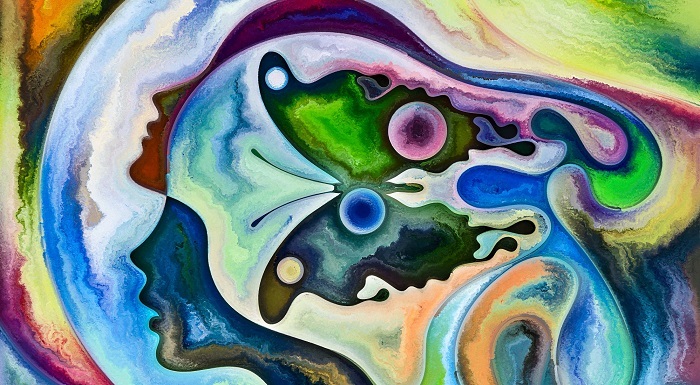

Color and emotions are frequently linked. Additionally, colour can affect how someone feels physically or mentally. For instance, research has revealed that for some people, looking at the colour red increases their heart rates, which then causes their bodies to release more adrenaline into their bloodstream. In relation to the two basic groups of warm and cool colours, there are also frequently observed psychological impacts of colour.

Warm hues, including red, yellow, and orange, can arouse a range of feelings, from cosiness and warmth to antagonism and wrath. Cool hues like green, blue, and purple can evoke both sentiments of serenity and melancholy. Color psychology ideas can be used in daily life as well. For instance, perhaps you intend to repaint your walls or redecorate your home or room using a new colour scheme.
The psychology of colour is centred on how colours affect sighted individuals mentally and emotionally in many areas of life. Color psychology includes both more conventional and scientifically supported components as well as some extremely individual ones. Keep in mind that different cultures interpret, interpret meaning, and perceive things differently.
Major effects are
The colour of a person’s clothing influences what qualities and traits we associate with her. Depending on the context, it may be culturally prejudiced due to political movements or historical occurrences. Black is frequently associated with authority, power, and strength. Think of a black belt in karate or a pair of doctoral robes (intellectual power) and physical and mental strength. However, black-clad sports teams face more punishments, and the players are associated with undesirable traits like aggression.
A customer can choose your goods because of their color. People’s emotions are sparked by colors. Color’s impacts frequently involve emotions. When making decisions, our brain heavily relies on feelings and emotions. Knowing which feelings your target audience associates with each colour can be useful. As a result, you will be able to precisely elicit the emotions you desire. Warm hues are typically used in campaigns or logos to generate trust and a favourable attitude toward your business. As a result, it fosters loyalty and raises consumers’ desires to buy. Warm hues like red and orange appear to switch on survival mode, boosting power and speed while lowering patience and creativity. Blue and other cool hues appear to have opposing relaxing effects. They promote creativity and are calming. Even lowering the crime rate is possible with the installation of blue lighting in streets or train stations.
There are numerous circumstances in life where you want to leave a positive impression, and there are certain colours you typically use in these circumstances. Putting aside significant occasions and important first impressions, you wear colour every day, so adding daily pops of colour theory to your wardrobe may boost your confidence. When you wear complementary colours or colours that complement your skin tone, you may even appear more attractive to others. The point is that if you choose your clothing’s colour scheme thoughtfully, it will only reflect favourably on you.
Red starts to prepare for probable danger by initiating a survival reaction. In those circumstances, time is perceived differently. Think back to a moment when you were tense and cautious; the period of time seemed to last forever. This allows you to focus more intently and respond more precisely in this dangerous situation. As a result, our forefathers were alert enough to quickly grab the spade as protection from the tiger. How is this useful, exactly? Depending on the circumstances, you might want consumers to leave the restaurant more quickly if it’s busy and there aren’t many seats available. However, you could want to let passengers at an airport believe that waiting times for delayed aircraft are shorter than they actually are.
The colour of your surroundings might affect how warm or chilly you feel. In a warm-colored environment, the temperature will feel higher than in a cool-colored one. This is hardly surprising if you consider the connotations these colours have with temperature. Blue is the colour of winter, ice, water, freshness, rain, and wind, and when you’re chilly, your lips turn blue. Warm colours like red or yellow conjure up memories of summer, fire, and the sun. Colors aren’t given the names “warm” and “cool” for nothing.
Orange is frequently used for food packaging and in fast-food restaurants because it is known to increase appetite. Because there are no natural foods in (bright) blue, it makes people feel disgusted and causes them to lose their appetite. Our reactions to food and beverages may change as a result of these implicit colour expectations.
Another study examined how colours affected output. Test results were noticeably worse for students who had to wait in a room painted red before taking the test. The researcher hypothesised that it might be because red is linked to danger and failure. Sports contests and games exhibit the same pattern of performance impairment brought on by literally seeing red. In a study, teams that faced opponents wearing red attire lost more frequently than when the opponents wore blue.
Information may be communicated through colour in a significant way, and it can also evoke specific emotions and even have an impact on people’s decisions. People’s choices for colours also have an impact on the things they buy, the clothes they wear, and the decorations they use in their homes. People frequently choose materials in hues that conjure up particular emotions or moods, such as choosing a car’s colour to convey sportiness, futuristic style, sexiness, or dependability. Painting a room a soothing green to generate a calm ambiance is one example of how colour can be used to evoke moods. The effects of colour on our feelings and behaviours can be influenced by a variety of personal, cultural, and environmental factors, according to experts